What Size Shocks Does Your Tacoma or 4Runner Need?
Picking the right off-road shocks for your Tacoma or 4Runner can feel overwhelming. With so many choices and variables—like how much your vehicle weighs or where you drive—it’s tough to know what’s best. In the past, you usually had to choose between a smooth ride or strong off-road performance.
That’s where AccuTune Equations come in. We custom-tune your shocks based on your vehicle, driving style, and gear setup—so you get the brand and size you want, with the ride quality you need. No more guessing. Just a better ride, built for you.
When selecting shocks, there are three key factors to consider:
-
Ability to make proper damping force
-
Heat capacity
-
Durability
Why Does Damping Force Matter on Tacoma Shocks?
A Brief Background On Shocks:
Damping force is the resistance a shock creates as it moves—this helps control how your suspension reacts over bumps and terrain. It’s made by oil flowing through small openings in the piston, where flexible discs slow the flow and create resistance.
Larger shocks have bigger pistons, which means more oil needs to move through them. This naturally creates more damping force. That’s why each shock size works best within a certain range—too much or too little force, and it won’t perform as well as it should.
Damping Force & Front IFS Coilovers:
On Tacomas and 4Runners, the front coilovers are mounted about halfway up the lower control arm. Because of this position, the shock moves only half as much as the wheel—and as a result, it creates only half the force. Even more importantly, only about half of that force actually makes it to the wheel.
When you do the math, that means front shocks on these Toyotas deliver only about 25% of the damping force to the wheel compared to shocks mounted directly to it. To make up for that, the front shocks need to generate about four times more damping force than the rear.
That’s why 2.0 shocks usually aren’t enough up front. While there are ways to tune them to be stiffer or more resistant, most aftermarket 2.0s just aren’t designed to handle the demands of the front suspension on these vehicles.
Can they work? Technically, yes—but pushing a shock beyond its design can lead to a harsh ride, faster wear, and poor performance. In fact, many undersized shocks end up too soft, making the truck feel floaty and bouncy—more like a Cadillac than a capable off-roader.
Summary:
Serious off-roading demands serious damping. If your shocks are too soft, you’ll feel it—expect frequent bottoming out and a bouncy, unstable ride when the terrain gets rough.
For the front shocks:
-
2.0 shocks work well for stock-weight Toyotas that stick to pavement or do light off-roading—like hunting, fishing, or easy trail rides at low speeds.
-
But if your rig is heavier or you’re tackling faster terrain like fire roads or desert trails, you’ll need the extra performance of 2.5 shocks. They’re built to handle the added weight, heat, and impacts that come with more demanding off-road use.
For the rear shocks:
-
2.0 shocks are usually enough for stock-weight Tacomas and 4Runners, whether you’re driving on-road or doing some light pre-running.
-
But once you load up with full overland gear—like skid plates, bumpers, and a rooftop tent—you’ll want to upgrade to 2.5 shocks in the rear. The extra weight needs stronger damping to keep your ride smooth and controlled.
What is Heat Capacity and When Does it Matter?
Heat capacity is a shock’s ability to handle tough off-road conditions without fading, leaking, or wearing out too quickly. Two things matter most: how much oil the shock holds and how quickly it can get rid of heat.
More oil means the shock can absorb more heat before it becomes a problem. And better heat dissipation helps the shock cool down faster. Bigger shocks usually perform better here—they hold more oil and have more surface area to release heat.
That said, brands like Fox and Icon build aluminum-bodied 2.0 shocks with larger 5/8″ piston rods. This design boosts oil volume and improves cooling, helping smaller shocks punch above their weight.
When is Heat Capacity a Factor?
Heat capacity becomes especially important when you’re driving fast on rough terrain for long stretches. For example, washboard roads cause the shocks to move quickly and repeatedly, which builds up a lot of heat. Large whoops can do the same, especially when hit at speed, forcing the shocks to use their full travel in rapid bursts.
Any terrain that makes the wheels move up and down quickly—like washboards, whoops, or rough trails—puts serious stress on your shocks. That’s why high heat capacity is key to keeping performance consistent and avoiding shock fade.
Summary:
Tacomas and 4Runners can run 2.0 shocks just fine for slow-speed off-roading and short bursts of harder driving—around 5 minutes of continuous high-speed action on rough terrain. That 5-minute estimate assumes you’re pushing the vehicle hard without letting up.
Step up to 2.5 shocks, and you get about 15 minutes of hard run time before heat becomes an issue. The added oil volume helps them stay cooler longer. But keep in mind—adding weight like bumpers, camping gear, or armor means more damping is needed, which creates more heat and shortens that run time.
If you’re cruising trails or exploring the backwoods, 2.0 shocks can handle the job. But if you’re hammering through dunes or fire roads all afternoon, 2.5s are a better choice—they’re built to handle the heat that comes with high-speed off-roading.
What Influences Durability?
Shock durability is dictated by the size of the shock, quality of material, and reservoir configuration.
Size Matters For Hard Use:
As we mentioned earlier, larger shocks naturally provide more damping force. This is because damping is tied to the shock’s cross-sectional area, and bigger shocks operate at lower pressures. Lower pressures are easier on the seals, helping the shock last longer.
Larger shocks also do a better job of staying within their ideal temperature range. Running a shock too hot doesn’t cause immediate failure, but it can harden the rubber seals and break down the oil, which leads to quicker wear and a shorter lifespan.
Quality of Materials:
We aren’t going to dive into the specifics of each brand here, but there are differences between the quality of materials used in each brand.
See our Fox vs King: 2.0 Coilover Shock Comparison article for more info.
Remote Reservoirs – Not Just About Cooling:
Remote reservoirs are often thought of as a way to increase oil volume for better cooling, but their main purpose is to reduce the shock’s internal pressure. When the shock shaft moves, it displaces oil, which increases nitrogen gas pressure. Higher pressures create more friction and wear on seals, leading to a rougher ride and quicker wear.
In an IFP (Internal Floating Piston) shock, everything—the piston rod, oil, nitrogen, and the IFP—are in a single cylinder. This setup leaves little room for nitrogen, so the pressure can quickly rise from about 200 psi to over 600 psi when the shock is compressed. While 600 psi isn’t usually an issue, heat makes the oil expand, causing pressure to spike even higher. Plus, IFP shocks are usually sealed during assembly, meaning they’re not rebuildable.
Remote reservoir shocks, however, have a separate cylinder just for nitrogen. This extra volume keeps pressure more consistent, even when the shock heats up. Plus, the separate nitrogen charge allows for easier rebuilding, extending the shock’s lifespan.
Note: In the images, you’ll notice that the nitrogen space in an IFP shock is much smaller, while the nitrogen space in a remote reservoir shock is significantly larger—often making up 90% of the reservoir. Keep in mind, these shocks were cut away for display purposes, so some parts have been repositioned for illustration.
Summary:
IFP shocks are a great budget-friendly choice for everyday street driving and light off-roading. However, they’re not built for high-speed off-roading on Tacomas and 4Runners. Their design just doesn’t offer the durability needed for tougher conditions.
Remote reservoir shocks, on the other hand, provide better ride quality and longer-lasting performance. They’re built to handle the heat and stress of rough terrain, making them the go-to option for more demanding off-roading.
What Do Compression Adjusters Do & Do I Need Them?
There are three types of compression adjusters on the market, low speed, high speed, and mid speed. Each one is designed to tune a specific performance characteristic of the vehicle.
Low Speed Compression Adjusters:
Low-speed compression adjusters are used to fine-tune how your vehicle handles, especially when it comes to things like g-outs and slow-speed bottoming out. These adjusters typically work with a needle and seat, which allows a small amount of oil to flow into the reservoir freely. When the oil reaches a certain speed and pressure, it then flows through a separate set of spring washers into the reservoir, activating the high-speed circuit for better control at faster impacts.
High Speed Compression Adjusters:
High-speed compression adjusters help fine-tune how your vehicle handles larger impacts, like potholes, whoops, and fast speed bumps. These adjusters use the high-speed spring washers mentioned earlier to control when oil flows through the discs. By adjusting the pressure required for oil flow, you can increase high-speed damping, making the shock more resistant to big, fast impacts and reducing harshness.
Mid Speed Compression Adjusters:
Mid-speed compression adjusters help fine-tune both low-speed and high-speed compression, depending on how they’re set. When fully open, they have a small effect on high-speed compression, but when fully closed, they significantly affect low-speed compression, making a big difference with each adjustment.
Think of mid-speed adjusters as a larger version of low-speed adjusters. When fully open, they allow a lot of oil to flow freely. When fully closed, they completely restrict oil flow, forcing the oil to pass through a set of spring washers instead.
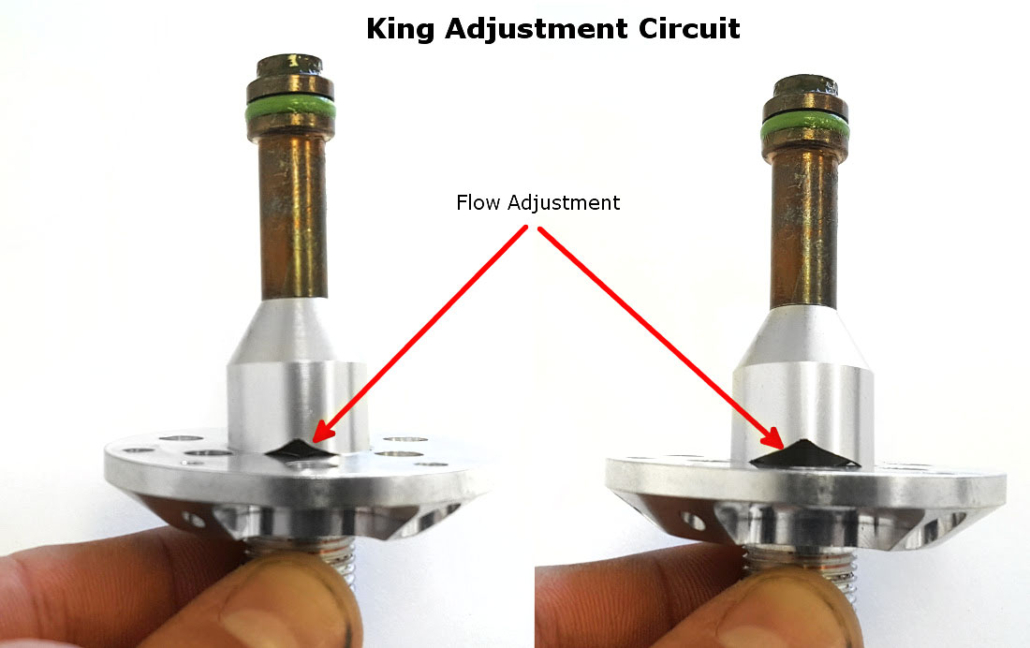
Summary:
Compression adjusters offer a simple, external way to adjust your shock damping. They’re perfect if you’re adding weight for trips, want to fine-tune ride quality, or need to firm up on-road handling for a more controlled drive.
-
Low-speed compression adjusters are great for both on-road driving and all types of off-road driving.
-
High-speed compression adjusters are most beneficial for high-speed off-roading.
-
Mid-speed adjusters are less impactful than low or high-speed adjusters but still offer useful tuning for both on-road and off-road driving.
You can read more about the Fox & King Compression Adjusters here:
- How Fox DSC Dual Speed Compression Adjusters Work
- Should I Get Fox DSC Adjusters?
- How King Compression Adjusters Work
Are Upper Control Arms Necessary For My Tacoma or 4Runner?
Stock upper control arms on Tacomas and 4Runners are often the first point where the suspension can bind when it extends. Upgrading to tubular or billet control arms can add about an inch of droop. While it may seem small, that extra inch can make a big difference, especially on lifted Tacomas, which often have only 2-3 inches of droop to begin with.
Without enough droop, the shocks can hit their extension stops hard, causing a rough, bouncy ride—especially on potholes, washboard roads, or any bump that needs more than two inches of travel. When the wheel can’t drop down enough, it can’t follow the terrain, causing the chassis to jerk down into the hole and then slam back hard on compression.
With enough down travel, the tire can smoothly follow the terrain, giving you a much more controlled, comfortable ride.
Summary:
If you are lifting your Tacoma or 4Runner more than 1.5″ it is necessary to install an upper control arm to get the full benefits of the upgraded shocks.
Do I need Extended Travel Rear Shocks?
With an upper control arm installed, Tacomas and 4Runners can achieve about 10 inches of front wheel travel. Ideally, the rear should have more travel to match, ensuring better performance and smoother rides. Having more rear travel than front travel is important because the rear is more affected by changes in height when you accelerate. If the rear doesn’t have enough travel, it can bottom out, causing the vehicle to buck and feel unstable.
4Runner Rear Shocks:
Stock-height replacement rear shocks on 4Runners offer around 9 inches of travel, which is decent. If you lift your 4Runner by 2-3 inches, you can use bump stop spacers to allow for 9.5-inch travel shocks. The simplest option is a 2.0 diameter, direct replacement shock for a 2-3″ lift, which requires just a 0.5″ bump stop spacer.
For a step up, you can use 2.5-inch diameter Tundra rear shocks. These need to be re-valved, the reservoir fittings need to be repositioned, and the bushings need to be swapped to fit your 4Runner.
The newest and best option for the rear of a 4Runner is the 2.5 aluminum body shock from Ride Shocks, offering 9.88 inches of rear shock travel. This is a great bolt-in option that provides excellent performance at a competitive price.
For serious off-road enthusiasts, you can go for custom-length shocks, which can give you up to 11 inches of travel. These will need 2-inch bump stop spacers, but be sure to pair them with a longer-travel spring to prevent the shock from falling out.
Tacoma Rear Shocks:
For first-gen Tacomas, stock shocks are extremely short and different from left to right, making it impossible to get decent wheel travel from the rear with stock mounts. We recommend custom rear shock mounts paired with universal-fit 2.0 x 10″ remote reservoir shocks, which can include a low-speed compression adjuster.
Second-gen Tacomas have taller rear shock mounts, and the amount of rear travel largely depends on the spring pack you choose. Stock replacement rear shocks for 05+ Tacomas offer about 8.5″ of travel, which is about the most you can get with the stock leaf pack. Mini-pack leaf springs replace the overload with a small pack, adding about 1.5″ of lift and 2″ of extra droop. These work well with 2-3″ lift rear shocks in the stock locations using a 1″ bump stop spacer.
Full replacement leaf packs provide more travel and flexibility. For direct-fit 2.0 shocks, you’ll need a 2″ bump stop spacer and around 3.5-5″ of lift for almost 10″ of travel. For 2.5 shocks, we suggest using Tundra shocks converted to fit the rear of the Tacoma, giving you almost 10″ of travel. To maximize the travel of aftermarket leaf packs, a rear shock relocation kit is required. These kits allow for 12-14″ travel with 2.0 or 2.5 shocks.
For overland setups, we recommend heavier leaf springs like Icon or OME Dakar, paired with 12″ travel shocks. For faster off-road setups, lighter leaf packs like Deaver, Atlas, or Icon, with longer 14″ travel shocks, work best. The ICON RXT Tacoma leaf pack is adjustable and tunable, making it a great choice for customization.
If you’re running oversized tires, 285/70R16 is the most popular choice. You’ll need at least 1″ bump stop spacers in the rear to prevent rubbing on the fenders, but always flex-test before hitting the trail to ensure a good fit.
Summary:
There are a lot of rear shock options for both 4Runners and Tacomas, depending on your rear spring choice. For 4Runners, bolt-in fitment is the only option. If you’re lifting the rear of your 4Runner, maximize travel by using aftermarket springs, longer shocks, and bump stop spacers.
For first-gen Tacomas, you’ll need universal-fit shocks and custom mounts to get decent rear travel. Second-gen Tacomas offer more options—stock springs and add-a-leafs can use the stock mounts, but aftermarket leaf springs should be paired with a shock relocation kit to fully unlock their potential. At AccuTune Off-Road, we custom tune all setups to ensure you get the ride quality you’re after.
Conclusions About The Capabilities of Taco & T4R Shocks:
2.0 IFP Monotube
In the front & rear of Tacoma’s and 4Runners 2.0 IFP monotubes provide a more comfortable ride than twin tubes and OEM replacement shocks, and work well for street driving and exploring the backwoods at a normal pace.
AccuTune Valving: No (not available pre-tuned)
AccuTune Rebuild: No (we do not offer rebuild services for these shocks)
2.0 Remote Reservoir Shocks
2.0 Remote Reservoir shocks are a great option for the rear of Toyota 4Runners and Tacomas. The added gas space in these shocks significantly improves heat capacity and durability, making them ideal for backwoods exploration, high-speed fire road driving, and prerunning. These shocks help handle the demands of challenging terrain while offering better performance and longevity compared to standard shocks.
AccuTune Valving: Yes
AccuTune Rebuild: Yes
2.0 Remote Reservoir Shocks with Adjuster
2.0 Remote Reservoir shocks with compression adjusters offer enhanced damping capability, allowing you to fine-tune your suspension for better control or added comfort, depending on your needs. These shocks are especially useful when you’re loading up for trips, as the adjusters help your suspension handle the added weight without compromising ride quality. Whether you’re looking for more control on rugged terrain or a smoother ride for longer road trips, these shocks provide a versatile solution.
AccuTune Valving: Yes
AccuTune Rebuild: Yes
2.5 IFP Monotube Shock
2.5 IFP Monotube shocks are an excellent option for the front of Tacomas and 4Runners, particularly for heavier setups engaged in slower-speed overlanding. The larger size provides more damping force and heat capacity, making them well-suited for handling added weight and extended trips. These shocks are also the first size available in extended length configurations, which pair perfectly with long travel upper control arms for vehicles looking to maximize suspension travel.
AccuTune Valving: No, due to complicated construction
AccuTune Rebuild: No, due to complicated construction
2.5 Remote Reservoir Shock
In the front of 4Runners and Tacomas, 2.5 Remote Reservoir shocks are the first to handle tough off-road terrain at speed. The large size offers the necessary damping and heat capacity, while the remote reservoir design ensures long-lasting performance and improved ride quality. These shocks are ideal for fast-paced overlanding on washboard roads, as well as for high-speed fire roads and whoops, providing both control and comfort.
In the rear, 2.5 Tacoma Remote Reservoir shocks are built to handle hard use and heavy loads. If you’re carrying a lot of weight—such as a roof-top tent, weekend gear, and more—these shocks are the perfect choice. They’ll keep you moving through tough terrain without sacrificing performance or blowing out under the load.
AccuTune Valving: Yes
AccuTune Rebuild: Yes
2.5 Remote Reservoir Shock with Adjuster
These 2.5 Remote Reservoir Shocks with Adjusters are the go-to choice for those looking to use heavy overland rigs on challenging off-road terrain while maintaining reliability and a comfortable ride. Whether it’s tackling washboard roads, whoops, or other rugged terrain, these shocks excel at high speeds and over extended periods. For stock-weight Tacomas and 4Runners, these shocks provide the necessary performance and durability to handle demanding conditions with ease, ensuring a smooth and controlled ride.
AccuTune Valving: Yes
AccuTune Rebuild: Yes

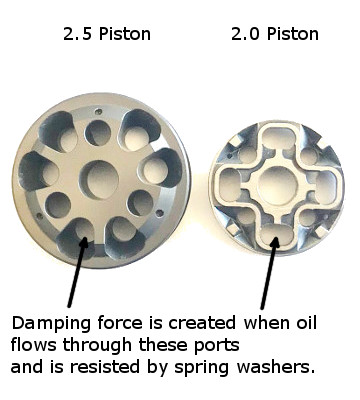

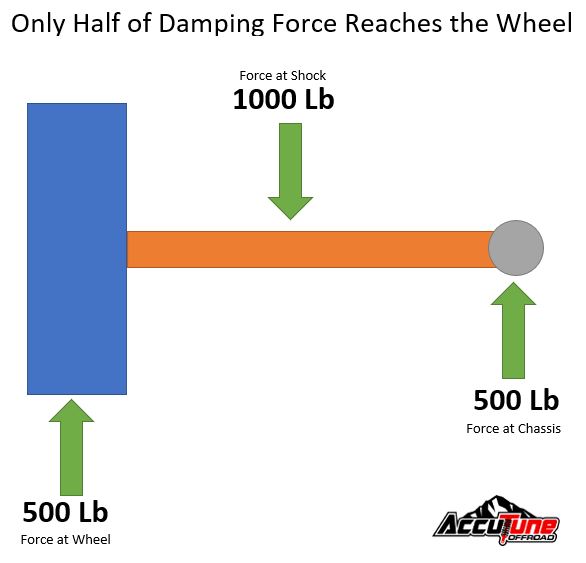
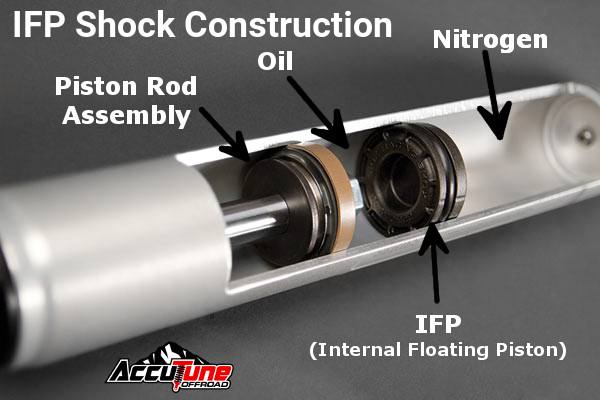
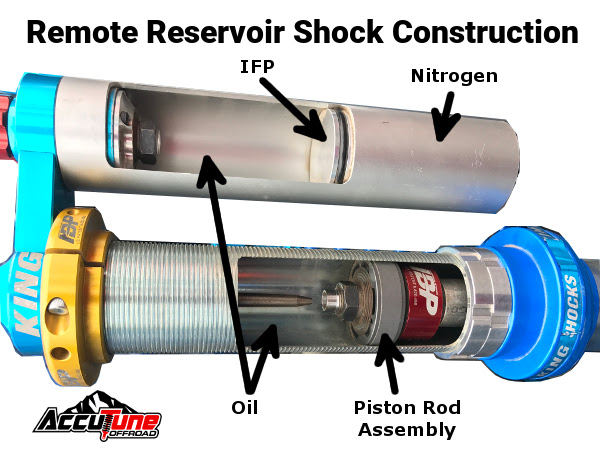
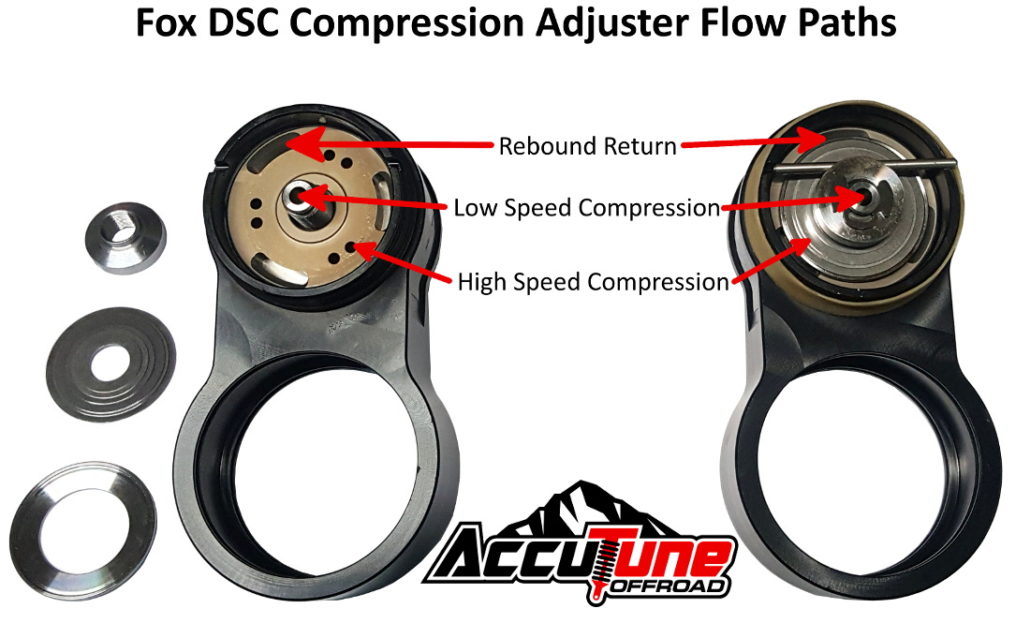

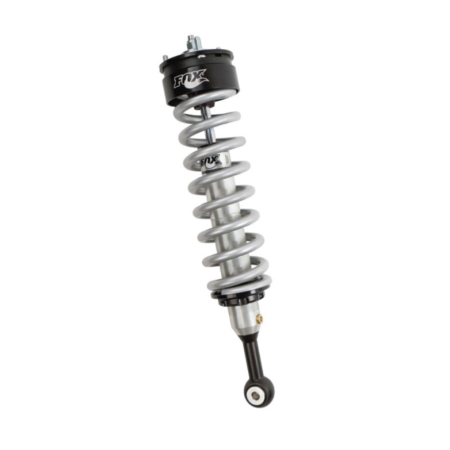
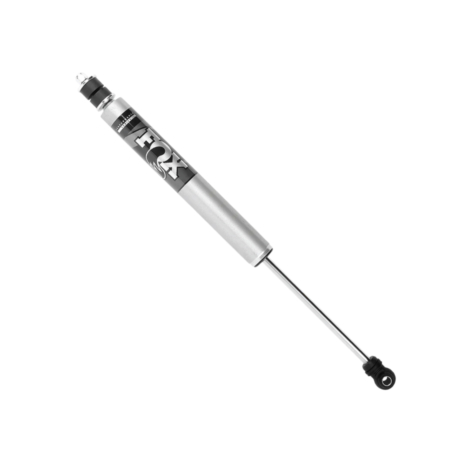
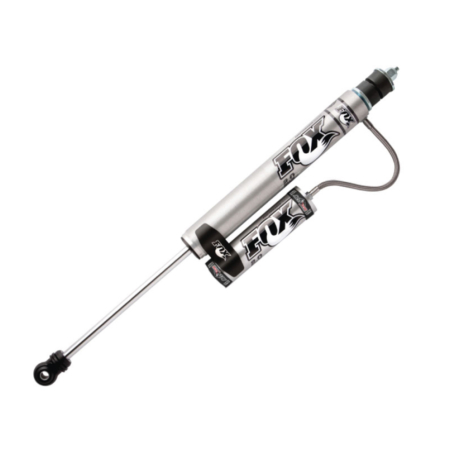


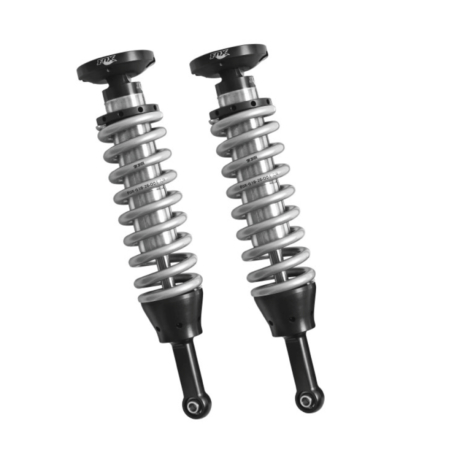
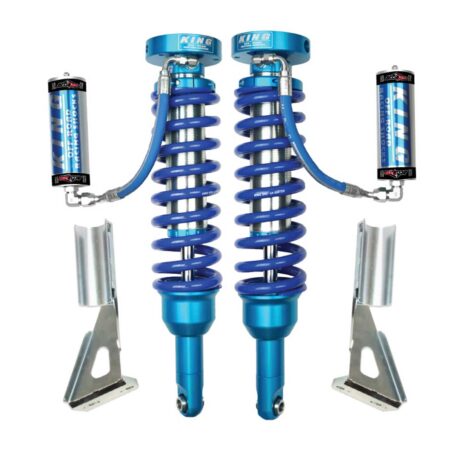
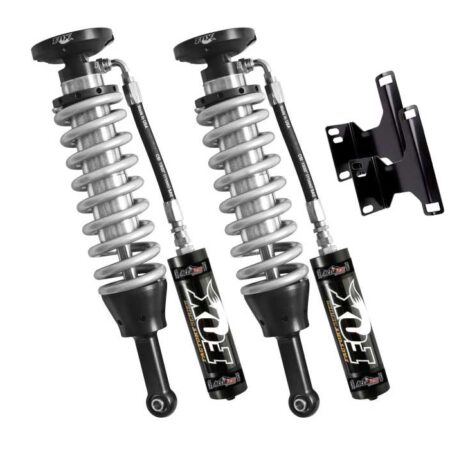
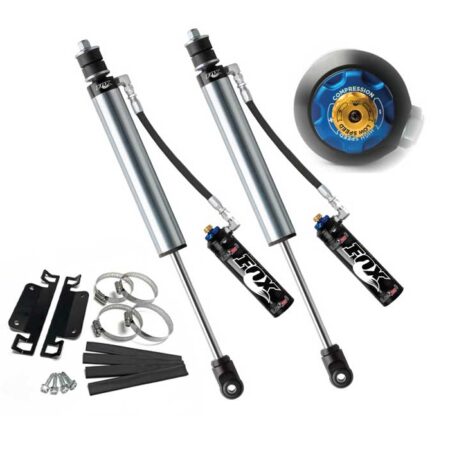

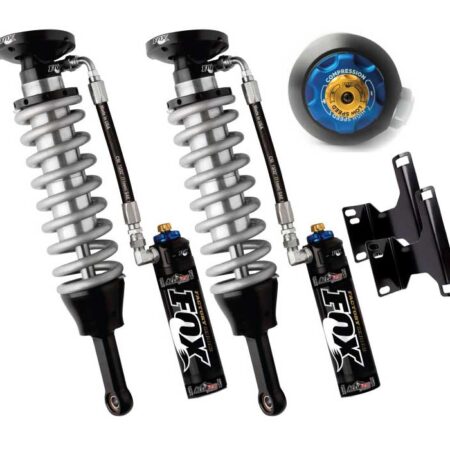






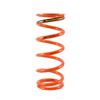


Great article. I think it’ll be useful for a lot of people new to Toyota offroad suspension. One correction however is that all 5th gen 4runners and I’m not sure what other earlier years can’t run 16″ wheels. The common tire size on those is 285/70/17.
Excellent article, learned a bunch, thanks
Thanks for putting this together!